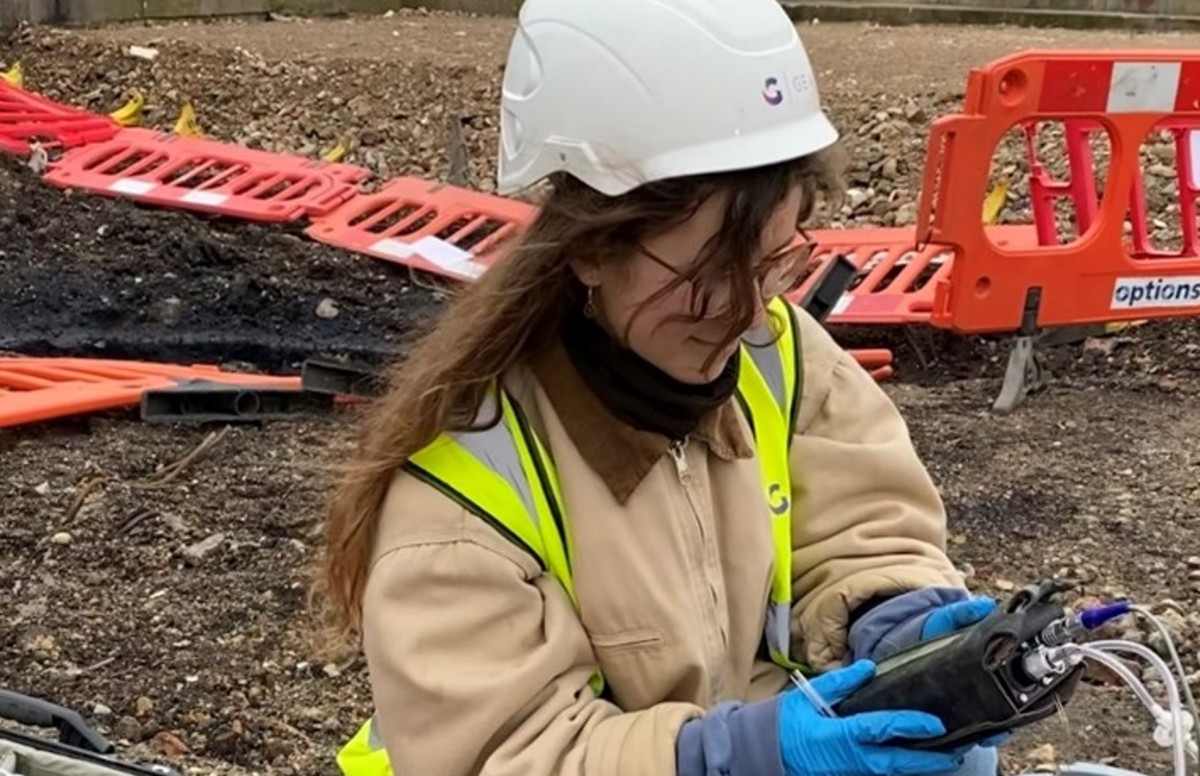The smart Trick of Geotheta That Nobody is Discussing
The smart Trick of Geotheta That Nobody is Discussing
Blog Article
Geotheta Fundamentals Explained
Table of ContentsExamine This Report on GeothetaHow Geotheta can Save You Time, Stress, and Money.The Best Strategy To Use For GeothetaSome Known Details About Geotheta Not known Facts About Geotheta

They conduct website examinations, accumulate examples, do laboratory examinations, and examine information to assess the viability of the ground for building tasks - Geo Tech Engineering. Based on their findings, geotechnical engineers provide recommendations for structure style, incline stability, keeping frameworks, and mitigation of geotechnical dangers. They collaborate with various other professionals, such as designers, structural designers, and building groups, to guarantee that geotechnical considerations are integrated right into the general task layout and execution
By analyzing the actions and buildings of soil and rock, they can determine possible geotechnical threats such as landslides, soil settlement, or incline instability. Their knowledge assists avoid failures or crashes that can endanger lives and building. Below are some detailed duties and responsibilities of a geotechnical designer: Website Examination: Geotechnical engineers conduct website investigations to gather information on subsurface conditions.
They interpret the data to understand the properties and behavior of the soil and rock, including their stamina, permeability, compaction characteristics, and groundwater problems. Geotechnical Evaluation and Layout: Geotechnical designers assess the information gathered during site investigations to evaluate the security and suitability of the website for construction tasks. They perform geotechnical estimations and modeling to assess variables such as bearing capacity, settlement, slope security, lateral planet pressures, and groundwater circulation.
The smart Trick of Geotheta That Nobody is Talking About
Foundation Style: Geotechnical engineers play an important function in making structures that can safely sustain the desired framework. They assess the dirt problems and load demands to figure out the ideal foundation kind, such as shallow structures (e.g., footings), deep foundations (e.g (https://www.huntingnet.com/forum/members/geotheta.html)., heaps), or specialized strategies like soil renovation. They think about aspects such as settlement limitations, bearing capacity, and soil-structure communication to develop ideal foundation styles
They evaluate building and construction plans, display site activities, and carry out area assessments to verify that the style referrals are adhered to. If unpredicted geotechnical problems arise, they analyze the scenario and supply referrals for removal or modifications to the style. Threat Assessment and Mitigation: Geotechnical designers assess geotechnical risks and threats connected with the task site, such as landslides, liquefaction, or soil disintegration.

Cooperation and Interaction: Geotechnical engineers function closely with other professionals entailed in a job, such as architects, architectural engineers, and construction teams. Efficient interaction and cooperation are necessary to integrate geotechnical factors to consider into the general job design and construction procedure. Geotechnical designers provide technical experience, response queries, and ensure that geotechnical needs are satisfied.
The Only Guide to Geotheta
Right here are some sorts of geotechnical designers: Foundation Designer: Foundation designers focus on making and examining foundations for frameworks. They assess the soil problems, load demands, and site features to establish the most appropriate structure type and design, such as superficial foundations, deep foundations, or specialized strategies like pile structures.
They evaluate the factors affecting slope stability, such as soil properties, groundwater conditions, and incline geometry, and create approaches to avoid slope failures and mitigate risks. Quake Designer: Quake engineers focus on assessing and developing frameworks to hold up against seismic forces. They assess the seismic hazard of a site, assess soil liquefaction capacity, and establish seismic design requirements to make certain the safety and security and resilience of frameworks during earthquakes.
They execute area testing, collect examples, and evaluate the accumulated information to characterize the soil residential properties, geologic developments, and groundwater conditions at a site. Geotechnical Instrumentation Designer: Geotechnical instrumentation designers concentrate on surveillance and determining the behavior of soil, rock, and structures. They set up and preserve instrumentation systems that keep track of factors such as dirt negotiation, groundwater levels, incline activities, and architectural variations to evaluate efficiency and supply early warnings of potential problems.
5 Simple Techniques For Geotheta
They carry out examinations such as triaxial tests, combination tests, direct shear tests, and leaks in the structure examinations to collect information for geotechnical evaluation and style. Geosynthetics Engineer: Geosynthetics engineers specialize in the style and application of geosynthetic products, such as geotextiles, geogrids, and geomembranes. They make use of these products to boost dirt security, enhance slopes, offer water drainage remedies, and control disintegration.
They often tend to be investigatory people, which suggests they're intellectual, reflective, and investigative. They are curious, methodical, rational, analytical, and rational. Several of them are additionally social, indicating they're kind, generous, cooperative, client, caring, valuable, compassionate, tactful, and friendly. Does this noise like you? Take our free career test to figure out if geotechnical engineer is one of your top profession suits.
In the office environment, geotechnical engineers use specialized software program devices to perform estimations, produce styles, and examine information. They prepare click here to find out more reports, evaluation task specifications, communicate with customers and group members, and coordinate job tasks. The office setup supplies a conducive atmosphere for research, analysis, and collaboration with other professionals involved in the project.
Fascination About Geotheta
They frequently check out job sites to conduct website investigations, assess geotechnical problems, and gather information for evaluation. These gos to entail traveling to different areas, in some cases in remote or challenging terrains. Geotechnical engineers may carry out dirt tasting, conduct examinations, and monitor building activities to guarantee that the geotechnical aspects of the job are being executed appropriately.
Geotechnical engineers also work in specialized geotechnical labs. Geotechnical lab designers work extensively in these atmospheres, taking care of testing tools, operating tools, and videotaping data.
Report this page